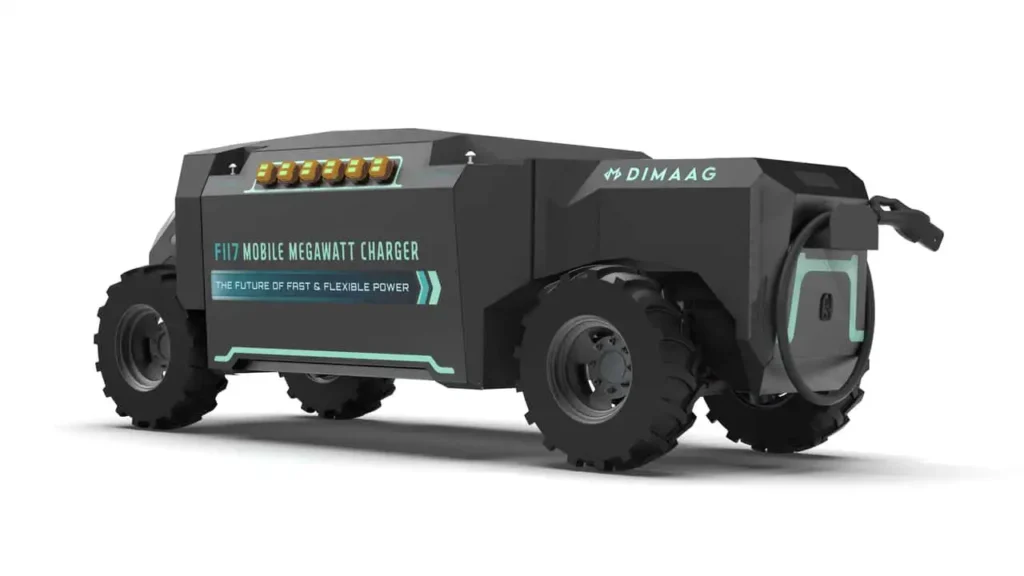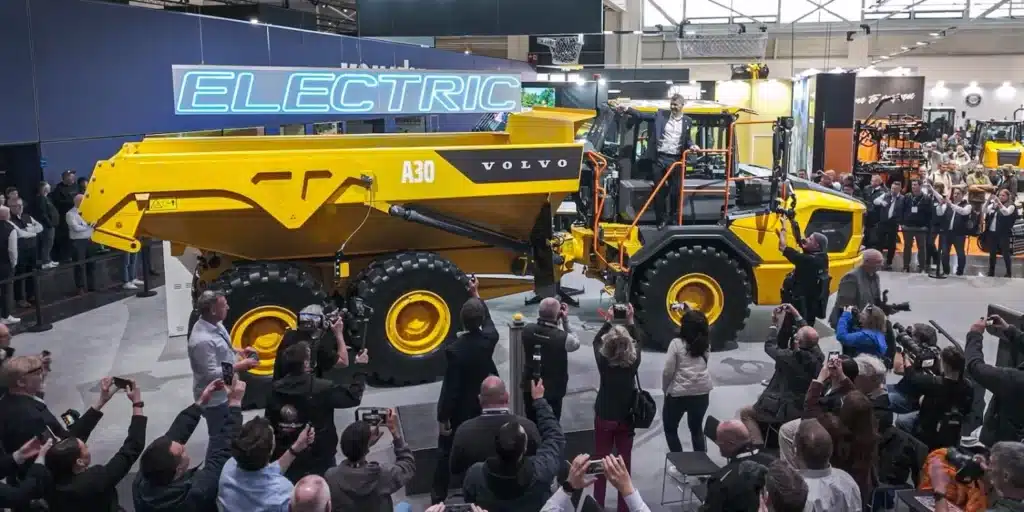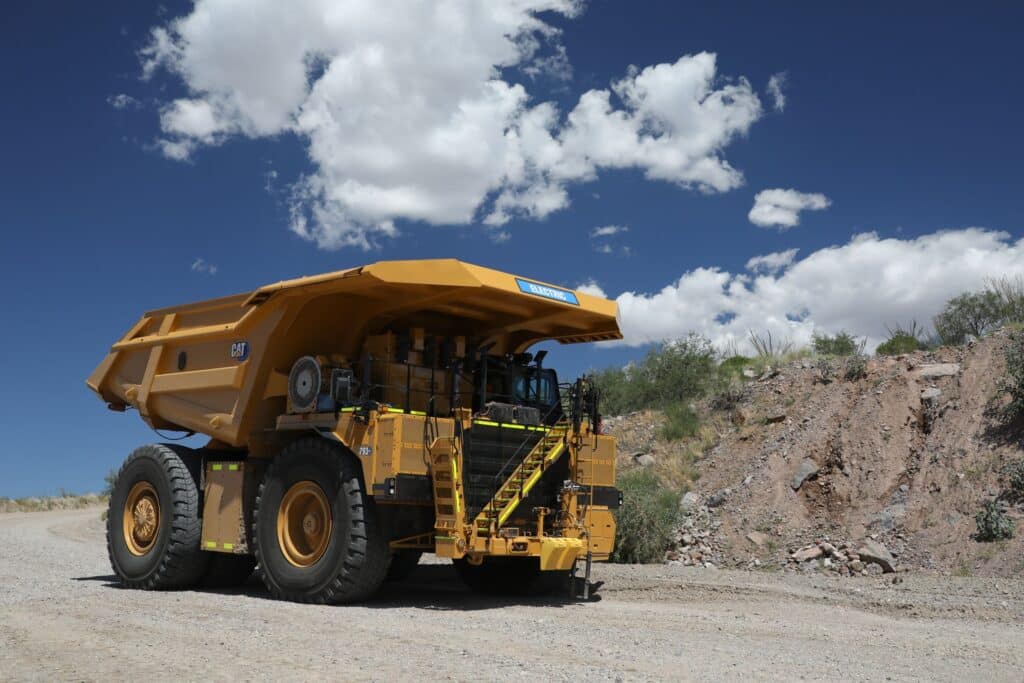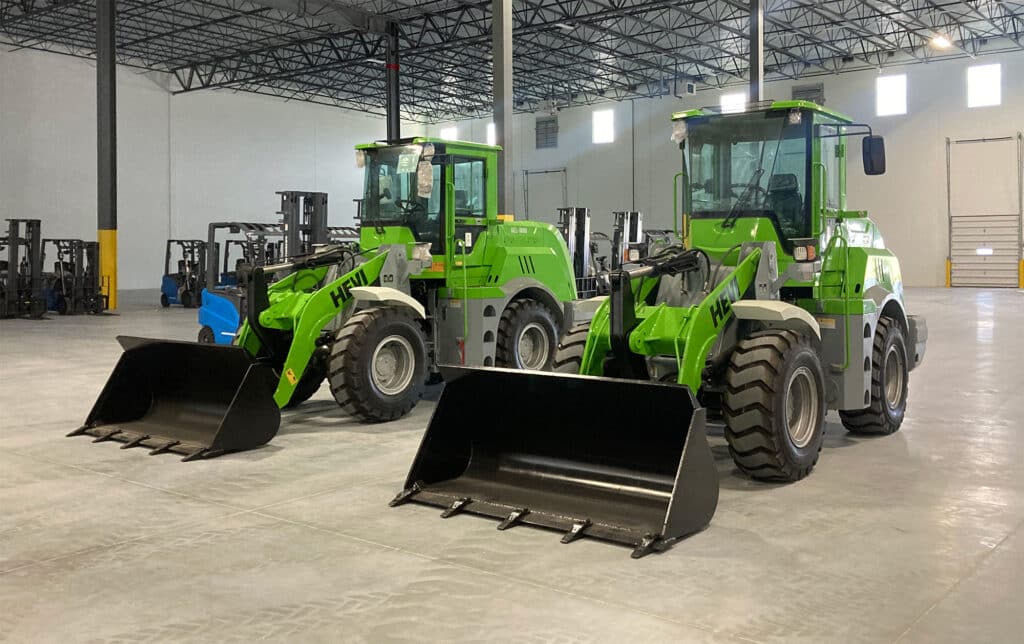Dimaag’s Driverless Battery Charger Can Deliver Up To 6MW for Job Sites
Job sites are changing for the better in multiple ways. Once synonymous with the roar of diesel engines and clouds of exhaust, construction zones, mines, and industrial facilities are now quickly shifting toward a cleaner, quieter future—thanks to the electrification of heavy machinery.
Electric excavators, loaders, and similar vehicles are beginning to replace their gas-guzzling counterparts. The benefits are clear: reduced emissions, quieter operations, and long-term savings for business owners as fuel and maintenance costs drop. But electrifying 30-ton machines that crawl at 5 miles per hour creates a unique challenge: how do you charge them in remote or rugged terrain where a conventional fast charger simply isn’t an option?
Enter the Megawatt Mobile Charger—a game-changing solution from Silicon Valley startup Dimaag-AI. This isn’t just a battery on wheels—it’s a fully mobile, autonomous megacharger designed for the real-world challenges of industrial electrification.

A Battery Beast on the Move
At the heart of the Megawatt Mobile Charger is a 295-kWh battery pack capable of delivering up to 6 megawatts of charging power. That’s enough to recharge multiple massive machines simultaneously through the Megawatt Charging System (MCS), which delivers a blistering 1,000 volts and 1,500 amps via modular DC-to-DC converters. Think of it as a mobile pit crew that brings the fuel to your fleet—no matter where they’re working.
But this isn’t your average mobile charger. It’s driverless and remotely operated, with four electric motors and four-wheel steering, allowing it to navigate tight sites and climb slopes up to 40%. It can even hit speeds up to 22 mph, fast enough to reposition across large job zones quickly. And for those looking to push the tech envelope further, it can be fitted with autonomous navigation systems.
From Concept to Jobsite
The best part? It’s not just a cool prototype. Komatsu, a global heavy equipment titan, has partnered with Dimaag-AI to bring this mobile charger to work sites around the world. That means the technology is already moving from idea to implementation—faster than many expected.
“Despite the challenges in developing the market for electric construction equipment, primarily due to installation costs and the need for adequate power supply infrastructure, we remain committed to accelerating our efforts toward market development through collaboration with companies such as Dimaag, in pursuit of our challenge goal to achieve carbon neutrality by 2050,” said Taisuke Kusaba, Senior Executive Officer (Jomu), CTO, Supervising Research & Development at Komatsu.
Mining and Construction Vehicles Are Electrifying Quickly
Heavy-duty equipment is undergoing a quiet revolution—literally. The loud rumble of diesel engines is slowly being replaced by the whisper of electric motors across mining sites and construction zones worldwide. Fully electric mining and construction vehicles are no longer niche prototypes or PR stunts; they’re quickly becoming the future of industrial operations.
Electric machines can reduce fuel costs by up to 70% and maintenance costs by up to 30%, due to no oil changes and fewer moving parts. With torque available instantly, electric machines offer better control, smoother operation, and improved productivity. Electricity is always far less expensive than gasoline of all types, including diesel.
The global market for electric construction equipment is projected to reach $24 billion by 2030, up from just under $9 billion in 2023. Major OEMs like Caterpillar, Komatsu, Volvo, Hitachi, and Liebherr have already launched electric or hybrid excavators, loaders, and haul trucks.
In mining, the stakes are even higher. Companies like BHP, Rio Tinto, and Glencore are investing heavily in battery-electric vehicles (BEVs) to reduce emissions and improve air quality in underground mines, where diesel fumes are a major health and ventilation concern.
At bauma 2025 in April, the world’s leading trade fair for construction machinery, Volvo Construction Equipment (Volvo CE) made big waves with a major announcement: the debut of its first-ever fully electric lineup, headlined by the revolutionary A30, the world’s first electric articulated haul truck.

In October last year, Newmont Corporation announced it had achieved a significant milestone by commissioning its first battery-electric large mining truck, Caterpillar’s Early Learner Cat 793 XE, at the Cripple Creek and Victor (CC&V) mine in Teller County, Colorado.

In August last year, Greenland Technologies Holding Corporation announced a strategic partnership with Lonking Holdings Limited, a major construction machinery manufacturer with 2023 sales of around $1.5 billion. This collaboration aims to transform the heavy machinery sector to all-electric in the United States. The two companies announced in July 2024 they will leverage their combined expertise to develop advanced electric machinery under Greenland’s HEVI brand, specifically designed to meet the needs of the U.S. market.

The age of dirty, inefficient diesel dominance in mining and construction is fading. In its place, a new era is emerging—one powered by data, intelligent infrastructure, and clean, cost-effective electricity. The growth of fully electric mining and construction vehicles is more than a trend—it’s a transformation.
Electric vehicles are quickly replacing less efficient, more costly, polluting gas-powered vehicles of all types, all across the globe. Mining and construction are just two examples out of many, where the significant cost-savings and cleaner air that electric vehicles offer are making the world a better and healthier place.

Electric Vehicle Marketing Consultant, Writer and Editor. Publisher EVinfo.net.
Services